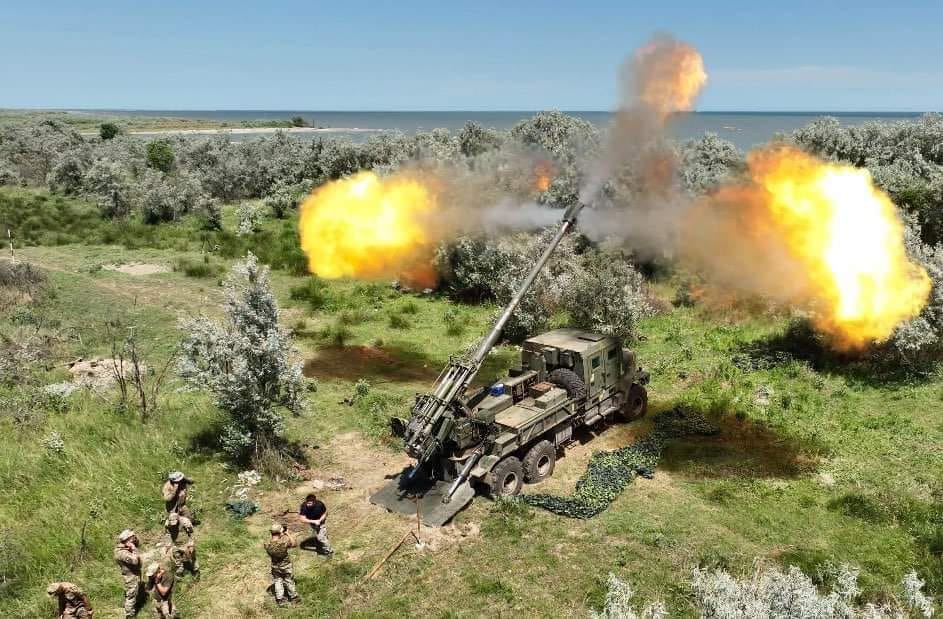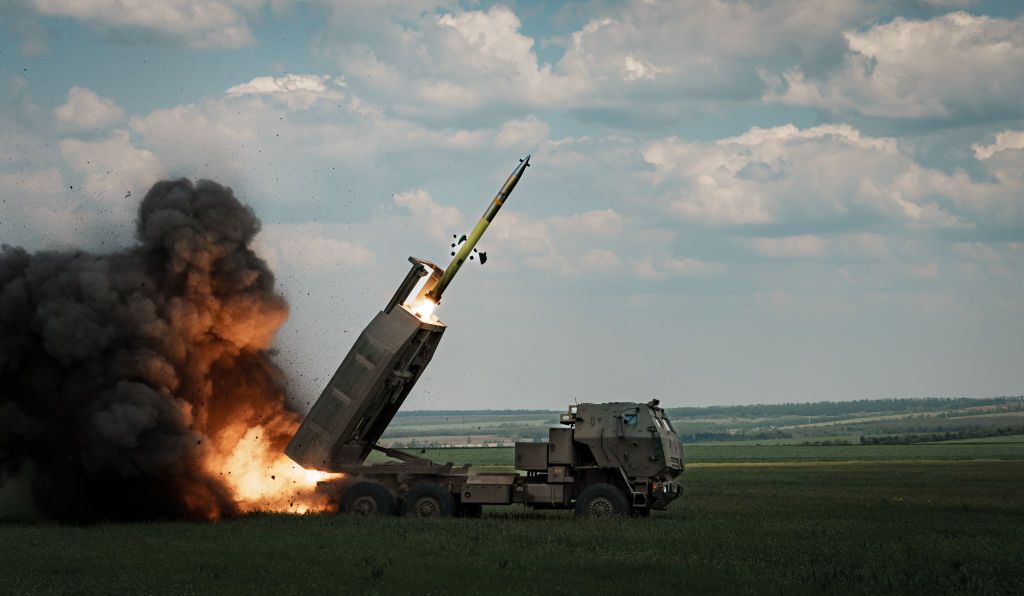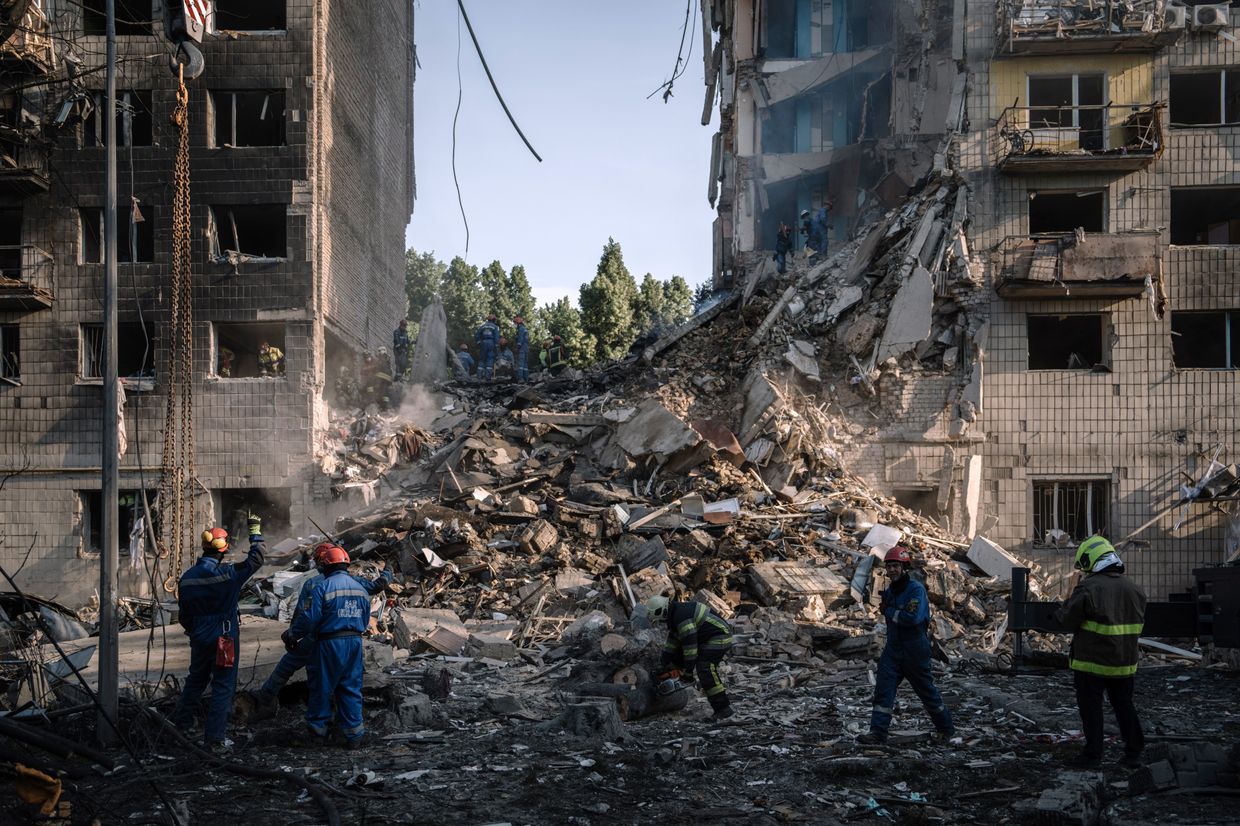After months of delays and frustration, U.S. military aid is once again heading to Ukraine in significant quantities.
Among the first to arrive will be a $1 billion package of weapons and equipment from U.S. stockpiles, the Pentagon announced on April 24.
"This package will surge munitions, weapons, and equipment forward to support Ukraine's ability to defend its frontlines, protect its cities, and counter Russia's continued attacks," the Pentagon said in a statement.
On April 26 the White House also announced a $6 billion package of military aid but crucially, the equipment pledged in this tranche won't be coming from existing U.S. stocks.
Instead, these weapons and supplies will be procured from the defense industry meaning they will take much longer to arrive – months or possibly even years.
"This announcement represents the beginning of a contracting process to acquire additional priority capabilities for Ukraine," the Pentagon said of the $6 billion package.
There are two exceptions – according to the BBC, some of the Patriot missiles and 155mm artillery ammunition included in the larger package will be "rushed" to Ukraine.
What is on the way right now? The Kyiv Independent has put together a detailed list of what the Pentagon's $1 billion package includes.
RIM-7 and AIM-9M missiles for air defense
The RIM-7 and AIM-9M are known more commonly as Sea Sparrow and Sidewinder missiles, respectively, and both are highly effective air defense weapons that can target both enemy aircraft and enemy missiles.
The Sea Sparrow is typically fired from a ship-based launcher, while the Sidewinder from a fighter jet.
Western nations, particularly the U.S., hold large quantities of both missiles but faced a fundamental problem in supplying them to Ukraine – Ukraine has no ships from which to launch Sea Sparrows, and its Soviet-era fighter jets were not compatible with Western missile systems.
Enter FrankenSAM, a U.S.-led initiative to enable Ukraine's decades-old Soviet missile launchers to fire new Western missiles.
According to the media, Ukrainian BUKs have been adapted to fire Sea Sparrow missiles and Osa's for Sidewinders.
They scored their first publicly-known success in January when one of the systems – it is not known which – shot down a Russian-launched Shahed kamikaze drone at a distance of roughly eight kilometers (five miles).
A third FrankenSAM project combining Patriot systems with Soviet-era radar systems is also reportedly in the works.
Stinger anti-aircraft missiles
The Stinger is a shoulder-fired air defense system that can be rapidly deployed by ground troops, also known under the category of man-portable air defense systems (MANPADS).
It uses a passive infrared seeker to lock on to targets, usually low-flying enemy airplanes and helicopters.
Ukrainian forces have also used them to successfully down Russian cruise missiles.
Northern Ukraine, footage of a Ukrainian MANPADS team from the Separate Presidential Brigade downing a Russian cruise missile with a FIM-92 Stinger last night. pic.twitter.com/DjIeKYplDP
— OSINTtechnical (@Osinttechnical) March 22, 2024
Also included in the weapons package are anti-tank versions of the Stinger, the Javelin, which played a crucial role in stopping Russian forces during the Battle for Kyiv.
Small arms and additional rounds of small arms ammunition, including .50 caliber rounds to counter Unmanned Aerial Systems
In short, bullets for guns.
While obviously a necessity for Ukrainian troops on the front lines, the larger .50 caliber rounds form a crucial part of Ukraine's less sophisticated but still effective air defenses – blasting kamikaze drones out of the sky with big machine guns.
Close one. Ukrainian mobile air defense units in Kharkiv oblast trying to repel a Shahed drone attack. The drone hits the ground just tens of meters away. pic.twitter.com/8xuHNPwO7t
— NOELREPORTS 🇪🇺 🇺🇦 (@NOELreports) February 27, 2024
Additional ammunition for High Mobility Artillery Rocket Systems (HIMARS)
HIMARS, whose prowess became a popular motif of internet memes, was a game-changer for Ukraine when it first arrived in the summer of 2022, allowing Kyiv to target Russian forces behind the front lines far more accurately than they had previously.
The weapons system – its full name is M142 High Mobility Artillery Rocket System – is a multiple rocket launcher system mounted to a 6x6 FMTV truck chassis, providing devastating firepower launched from a highly mobile platform.
Its rockets are radar-guided, with a range of around 70 kilometers (over 40 miles). When combined with high mobility, it is the ideal "shoot and scoot" system to target enemy weapons dumps and command posts.
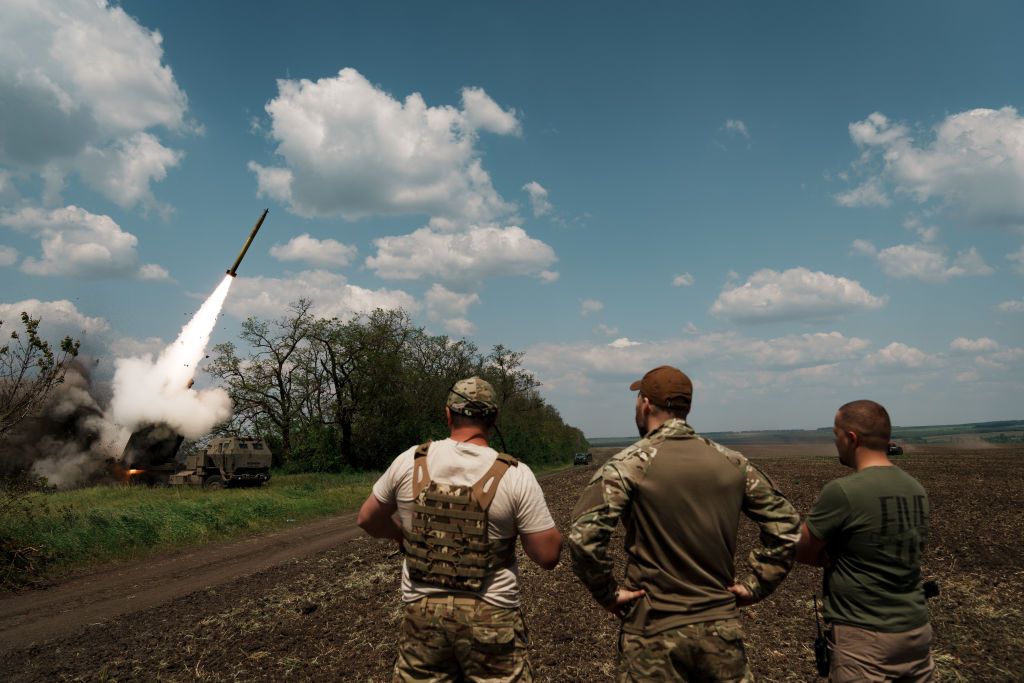
HIMARS success stories are too numerous to count, but most recently, they were used against a military training ground in occupied areas of Donetsk Oblast where Russian troops were stationed, killing at least 60, the BBC reported on Feb. 21.
One crucial point to note – HIMARS launchers can also fire long-range Army Tactical Missile Systems (ATACMS) and, as reported on April 24, the U.S. secretly shipped over 100 of them to Ukraine last week, some of which were immediately deployed and used to strike a Russian military airfield in Dzhankoi in occupied Crimea.
155 mm artillery rounds, including High Explosive and Dual Purpose Improved Conventional Munitions rounds
Of all the things Ukraine is in dire need of right now, 155 mm artillery rounds are top of the list.
For months now, Kyiv has been sounding the alarm over a critical shortage of artillery ammunition that has allowed Russian forces to make advances on the battlefield and has even been attributed to the fall of Avdiivka in February.
There is nothing overly sophisticated about a 155 mm artillery shell. They have been used in warfare in one form or another for more than a century.
The fact they still play such a crucial role in Russia's full-scale invasion of Ukraine shows that despite all the advancements in military technology, old-fashioned bludgeoning of the enemy with artillery can still make or break a battle.
It is estimated that 80% of casualties on both sides are caused by artillery.
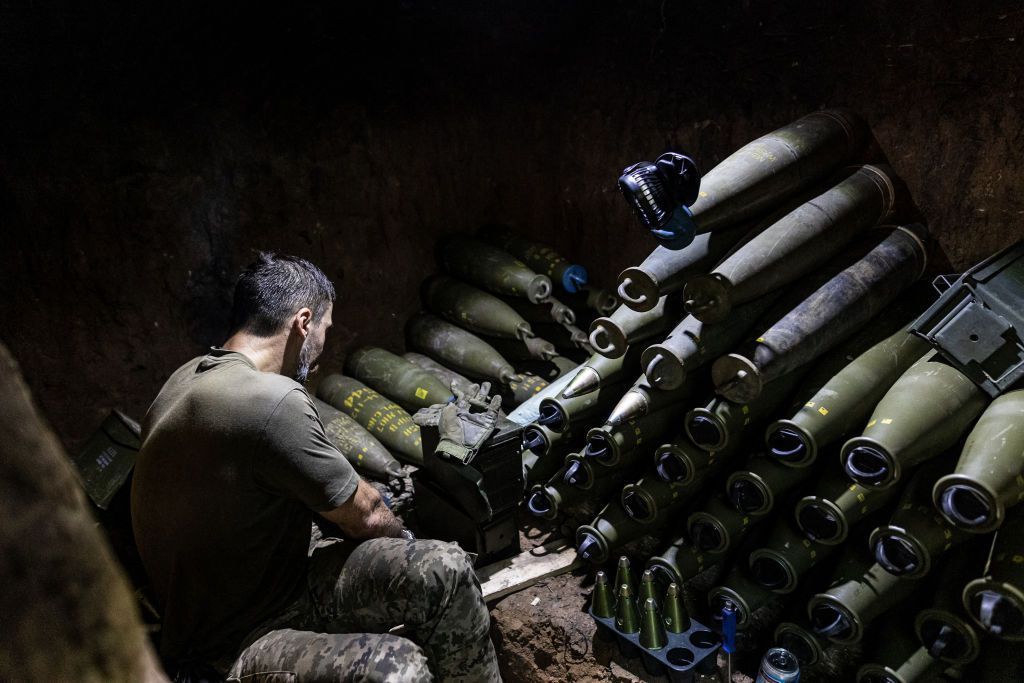
As for the "Dual Purpose Improved Conventional Munitions" mentioned in the U.S. Defense Department statement, these are what are more commonly known as cluster munitions
The announcement last year that the U.S. was sending cluster munitions to Ukraine was seen as controversial due to humanitarian concerns over their use. Cluster munitions scatter bomblets over a wide area, and duds, or unexploded bomblets, can pose a danger to the civilian population in the area long after the hostilities end.
However, they are undoubtedly effective on the battlefield. Although not enough to make last year's counteroffensive successful, U.S.-supplied cluster munitions did help destroy Russian positions in areas where Ukrainian troops had struggled to advance.

105 mm artillery rounds
The little brother of the 155 mm artillery shell, the 105 mm round is fired by smaller howitzers such as the U.S. M101, the U.S./UK M118/M119, and the Italian OTO Melara, all of which are in the possession of Ukrainian forces.
While less powerful and with a shorter range than the 155 mm shell, the 105 mm still plays a vital role in battlefield engagements.
Crucially, Western nations have far more of these that could be sent to Ukraine – South Korea alone is thought to have 3.4 million of them.

Bradley Infantry Fighting Vehicles
Armed with a powerful 25 mm Bushmaster cannon, wire-guided anti-tank missiles, and capable of carrying eight soldiers as well as its crew of three, the Bradley is a hugely versatile infantry fighting vehicle (IFV) that has become somewhat of a star on the battlefield in the hands of Ukrainian operators.
A recent video circulating on social media shows a Bradley rescuing wounded soldiers from the battlefield, laying down heavy fire on nearby Russian positions, and making a swift and successful exit.
Even more impressively, earlier this year, two Bradleys engaged – and then totally destroyed – one of Russia's most advanced tanks, the T-90M.
There are three things you can watch forever. Like this Ukrainian M2 Bradley IFV obliterating a «no-analogue» russian T-90M tank.
— Defense of Ukraine (@DefenceU) January 18, 2024
📹: 47th Mechanized Brigade pic.twitter.com/4NwvEryE3Y
It is not known how many more Bradleys are being shipped to Ukraine, but the U.S. has reportedly already sent around 190.
Precision aerial munitions
Precision aerial munitions is a vague term that could cover several different weapons. Assuming ATACMS are covered under the HIMARS section, it could be referring to Joint Direct Attack Munitions (JDAMs).
JDAM is a smart bomb launched from an aircraft against ground targets. Using GPS guidance, they can hit a target within five meters.
Speaking last year, Yurii Ihnat, then-spokesperson for Ukraine's Air Force, confirmed Ukraine was using them.
"These bombs are slightly less powerful but are extremely high-precision," he said, adding: "We would like to have more of these bombs to consolidate our success on the front."
The above is not a comprehensive list of all the weapons headed to Ukraine. According to the U.S. Defense Department, it will also include Mine Resistant Ambush Protected Vehicles (MRAPs), High Mobility Multipurpose Wheeled Vehicles (HMMWVs), logistics support vehicles, claymore anti-personnel munitions, and night vision devices.
